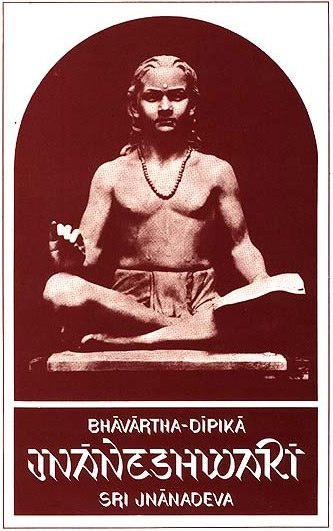Jnaneshwari (Bhavartha Dipika)
by Ramchandra Keshav Bhagwat | 1954 | 284,137 words | ISBN-10: 8185208123 | ISBN-13: 9788185208121
This is verse 9.7 of the Jnaneshwari (Bhavartha-Dipika), the English translation of 13th-century Marathi commentary on the Bhagavad-Gita.—The Dnyaneshwari (Jnaneshwari) brings to light the deeper meaning of the Gita which represents the essence of the Vedic Religion. This is verse 7 of the chapter called Raja-vidya and Raja-guhya Yoga.
Verse 9.7
Verse 9.7: “All the beings, O Son of Kunti, return within my Cosmic Nature at the close of a (Yuga-) cycle. The same once more, at the beginning of the (Yuga-) cycle I send forth into being. (98)
Commentary called Jnaneshwari by Jnaneshwar:
That Maya is named Prakriti, and as was said before it splits into two: one appears in an eight-fold variety and the other higher one manifests itself as “individual soul” (jīvabhūtā). You did hear all about this subject. No need then to say it again. At the passing away of the world, all these separate beings merge into My Prakriti in its non-manifest form. Grass with its seed, is dissolved into the earth in the extreme heat of summer “Grishma” season; and do not the clouds surging in the monsoon melt into the autumnal sky? Or see, how the wind becomes calm and merges into the vault of the sky, or again see, the ripples disappear in water itself, or the scenes in the dream are dissolved in the mind itself on waking. Even so the beings created and made perceptible by the Maya, merge into it (Maya) at the close of the Kalpa (cycle). Then in the beginning of the new Kalpa (cycle), so goes the story, I create them all again. Let me tell you now the truth of this story.
